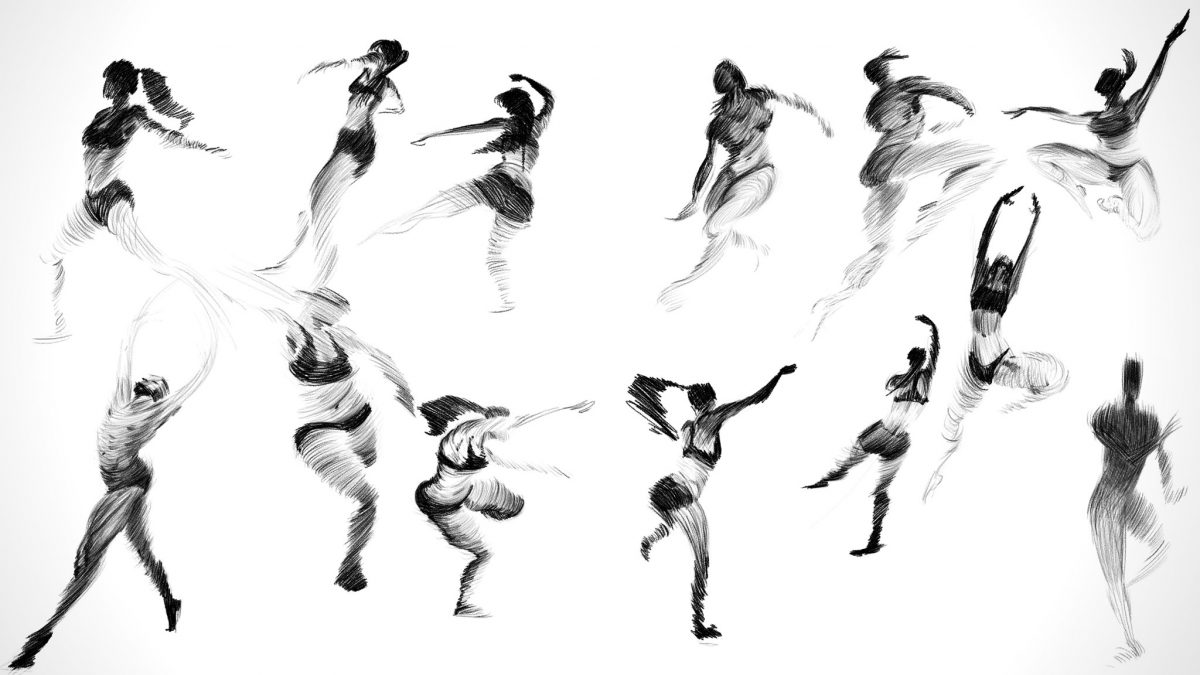Talks Art, Gesture Drawing, Process and Storyboarding
It is a pleasure to bring you this interview with Bodies in Motion user Chris Parker. Since we first saw the work he shared on the site (username ChrisPy ), we’ve been inspired by the style and energy in his drawing and animation studies. We took a bit of time to sit down and discuss his path in art and how he approaches the challenging task of gesture drawing.
Q: So, let just ask first – how long have you been drawing?
A: I’ve been drawing since I was a child, though the vast majority of my art was on very expendable mediums such as on the back of homework, the corners of pages, and other assorted locations that could be designated for artwork. My brother was a fairly big inspiration to me when I was a kid due to the fact that he was 5 years older than me, which meant that everything he was doing was on a slightly better and more technical level than whatever I was doing. The vast majority of the time we were designing one of three things: movies, video games, or monsters (which could be featured in one or both of the former, haha). We would spend entire afternoons and evenings walking around in circles pitching ideas to each other, arguing over who’s idea was better, fighting over who’s idea was better, and then usually coming to some sort of formal agreement on how the idea should work (or my mom would forcefully make us be quiet).
However, I never had any formal art training in elementary school or highschool outside a few art classes. All of my sketches and ideas were just fun brainstorming exercises to pass time and it had never occurred to me that I should go to art school or pursue a career in art. Funnily enough, I was actually planning on going into computer programming because… well… I liked sitting on the computer, playing games, surfing the web and I had an uncle who worked in the IT department at OSU. Fortunately, my mom knew me better than I did and gave subtle hints at exploring different art schools and the possibilities that one could work as an artist.
I knew nothing about the art world or art community, but I ended up going to CCAD to get a formal education in art, with a major in Cinematic Arts and a minor in 2D animation, which eventually turned into a major in 2D animation.
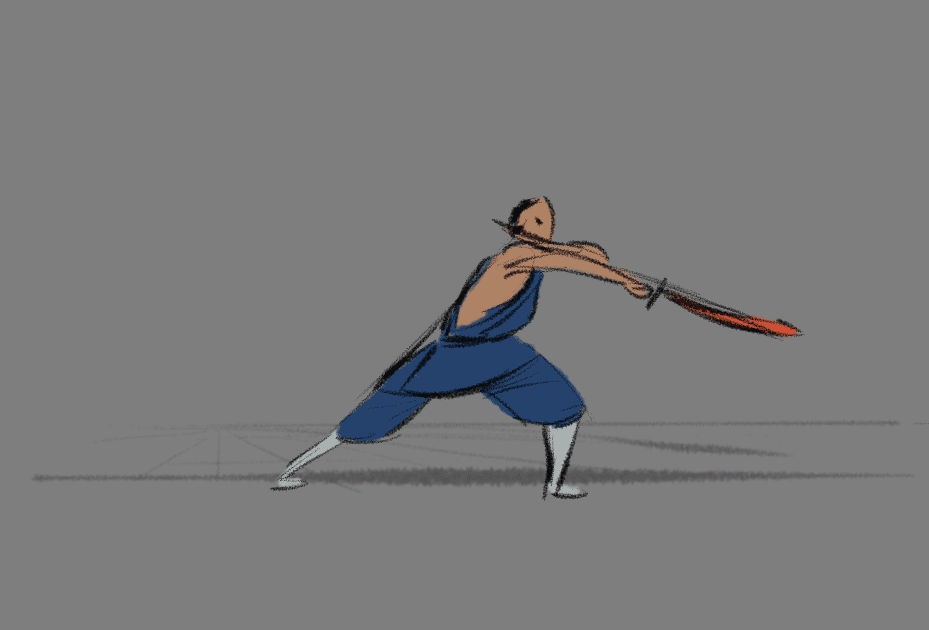
Q: What got you started with gesture drawing?
A: It was a wonderful and honest critique that a teacher gave me in a Layout and Timing class (for those who aren’t animators, Layout and Timing is an important part of setting up and finalizing a shot). The conversation went something along the lines of this:
“Chris, you work really hard, but your hands and faces are bad and I don’t think you understand how to draw either. You should try drawing them more.”
Which was an entirely correct statement! All I drew for my entire life was monsters and doodles with a zebra ballpoint pen! I knew nothing about anatomy, gesture, or form and unfortunately, the only real anatomy drawing class that was offered during Freshman year in college was one that I accidentally skipped due to signing up for the wrong classes. The one thing I did know for certain is that I absolutely HATED drawing people because I thought there was nothing interesting about a person. You see people everyday so why would anyone care to draw something that is casual and ordinary? To me, ordinary was boring and the only cool things were monsters (which is a huge irony, because I love ordinary now).
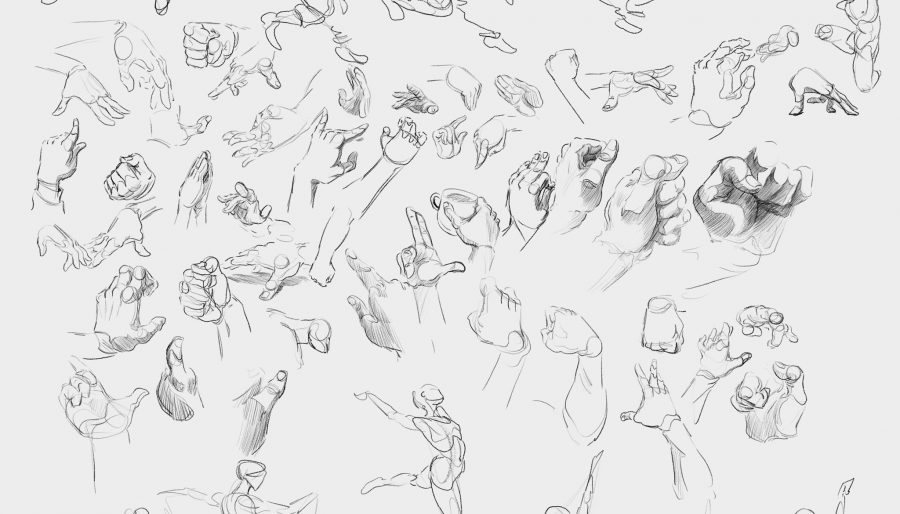
So, I made it my goal to draw 100 hands everyday by using a few gesture drawing websites that were popular to use in our class, but to make it work in a timely manner I had to draw each drawing within 30-45 seconds (1 minute was too scary for me).

I remember at the very end of my first hand drawing session that I was amazed at how much better my hands looked after only 20 minutes of gesture drawing. There was also something very comforting about gesture drawing because the disposability of the drawings meant that I was never too concerned about failing a drawing because in 30 seconds or so I could be onto a new attempt.
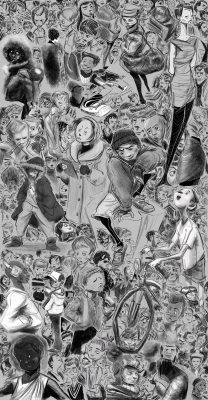 Overtime, I branched out to full body gestures, faces, and other parts of the body.However, I still kept everything within about 60 seconds or 90s, but I would just focus on one area of a pose if I wanted to learn more about that specific piece of anatomy. At the time, this was a very easy and convenient way to become comfortable with drawing unfamiliar things without becoming embarrassed or frustrated. Over time, I found gesture drawing to be very relaxing and fun, and then I even managed to, believe it or not, enjoy drawing hands and people.
Overtime, I branched out to full body gestures, faces, and other parts of the body.However, I still kept everything within about 60 seconds or 90s, but I would just focus on one area of a pose if I wanted to learn more about that specific piece of anatomy. At the time, this was a very easy and convenient way to become comfortable with drawing unfamiliar things without becoming embarrassed or frustrated. Over time, I found gesture drawing to be very relaxing and fun, and then I even managed to, believe it or not, enjoy drawing hands and people.
Hopefully nobody minds if I take a little soapbox moment here, but I think a lot of the things artists hate to draw are things that they aren’t good at and being aware of what things you hate is generally a good indicator of a lack of skill in that area. I absolutely HATE drawing in color, but it wasn’t until the last year that I’ve tried to get over that issue because I realized my main hatred for color was my inability to utilize it in a way that worked towards what I wanted. The vast majority of things that I was petrified of drawing in the past are now things that I enjoy drawing and the things that I’m still uncomfortable with are usually areas that I’ve never spent time in properly investigating.
In short, confront those scary drawings and don’t be ashamed of failure!
Q: You have such strong gesture in your figures, what goes through your mind when you are approaching a figure? What are the main considerations?
A: For the last few months to a year, my main focus in gesture drawing and design is currently split into two categories: Continuous Contour Line Gestures and “Grass” Crosshatching (as Viktor Kalvachev calls it)
I usually practice both types in the morning and I’ve found both methods to be useful in their own distinct ways. The continuous contour line gesture is a lot of fun because it forces you into a corner of having to be dedicated to the line you have started and not picking up your pen/pencil until it is finished. This technique was real tricky for me to use at first since I was used to drawing in the Mattessi method of “force”, but I found out that continuous contour line drawing requires the same understanding of force to keep track of the energy in the line and where it is moving.
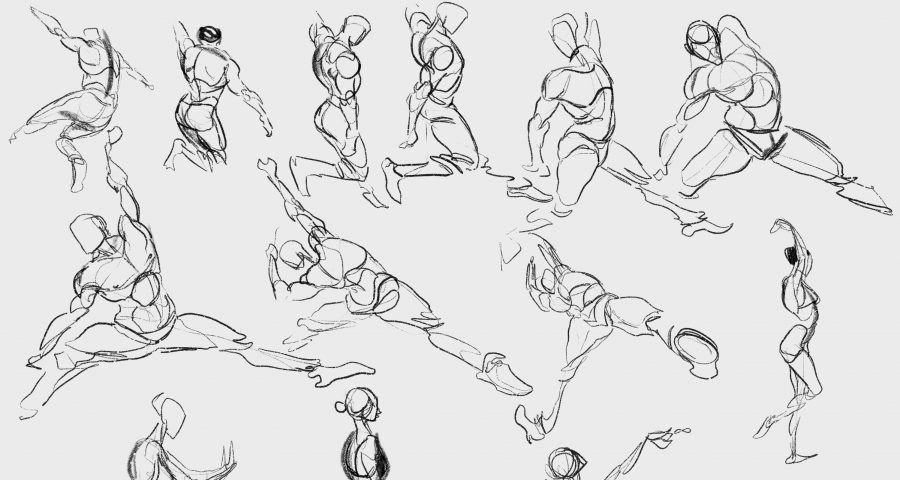

When using this method I need to make sure that the pose is both dynamic and volumetric as it can be a little troublesome trying to balance everything out while doing so in just one line. One of the first areas I’ll start with is the relationship of the rib-cage to the hips and make sure that that area will be guaranteed to have volume and dimension. The relationship of the ribs to the hips is by far one of the most important areas to have in correct perspective on as it is always involved in the “line of action” of a pose and all of the other limbs follow off of the perspective established by them.
I’m still investigating the ins and outs of this method, but so far I’m liking it as it helps with storyboarding detailed poses very quickly without needingneeded a rough underdrawing and it requires creativity to make the pose work well. The other advantage I’ve found with this technique is that it helps me draw loose backgrounds faster because I’m focusing on how everything in a scene is organically attached to each other and how they directly interact with one line. Some of this may not make sense, but I can definitely say that it has helped.
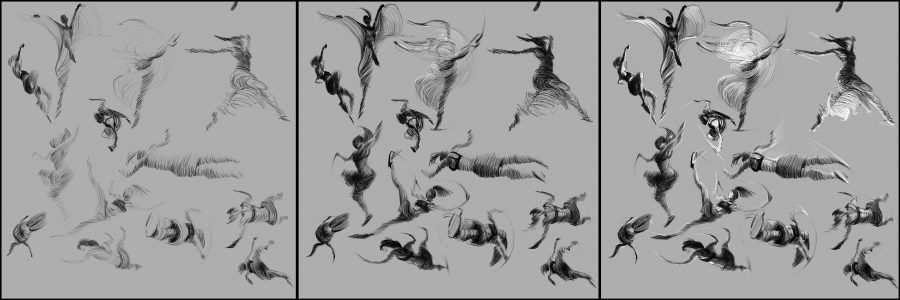
The “grass” crosshatching gestures are fun in a different way because the only real focus is the direction of the lines and how that captures the motion of the pose. I imagine it kind of as a gust of wind that is wrapping around the body and I’m merely drawing the energy from that gust. When doing this, I also try not to draw out a quick gesture of the shape I’m aiming for because sometimes I think it’s fun to creatively figure out how I’m going to pull-off the gesture and I think having a preconceived shape can be a bit limiting, but for hands and fine details I might make a very quick outline of the shape I want the crosshatching to fill. Unlike the continuous contour line gesture method, I do not start with the relationship of the hips to ribs but focus entirely on where I think the energy of the pose is and how it is twisting around the model.
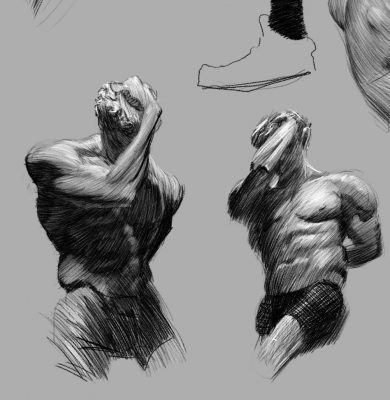 Since I’m trying to capture a continuous flow of energy, I will usually avoid intersecting lines and attempt to find a quick and creative solution to make all of the lines feel like they are part of an interconnected motion while still capturing depth and three dimensionality; however, sometimes intersecting lines can be good for clothing because it makes a very distinct break and separation in texture and alerts the audience that they are looking at something that is “not skin”. This isn’t necessary, but I’ve found that it can look good in certain circumstances.
Since I’m trying to capture a continuous flow of energy, I will usually avoid intersecting lines and attempt to find a quick and creative solution to make all of the lines feel like they are part of an interconnected motion while still capturing depth and three dimensionality; however, sometimes intersecting lines can be good for clothing because it makes a very distinct break and separation in texture and alerts the audience that they are looking at something that is “not skin”. This isn’t necessary, but I’ve found that it can look good in certain circumstances.
For storyboarding, I usually use this method when posing out scenes that require a lot of movement and fluidity, such as a dance sequence or a an over-the-top fight sequence, since in such scenes one of the most important aspects to capture is how the motion and energy flows from one character into another, or even how the background is composed to compliment that energy.
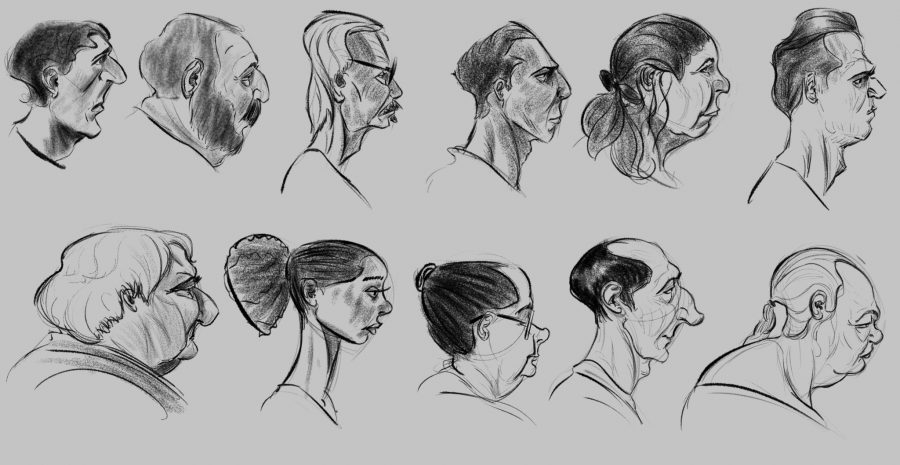
Q: How do you approach drawing heads?
Not well haha. I think drawing heads is by far my weakest area due to the fact that storyboarding rarely requires drawing all of the subtle nuances of a face. It is an area I’m still working to improve upon and I hope to develop a good strategy for drawing heads in the “grass” crosshatching style.
Q: What artists, current or past, inspire you?
Once again, I was kind of in an odd place in art school because I didn’t really have any artistic inspirations due to not being interested in pursuing an art career until my senior year of high school and I also avoided art focused social media platforms due to not having a smart phone. The concept of having an inspiration was very foreign to me, so the only real inspirations I had were artists from gesture drawing books that a teacher recommended to me:
Mike Mattessi’s Force series and Glenn Vilpuu’s drawing manuals. Mike Mattessi’s Force books really helped me gain a more solid comprehension of what a gesture is and how one can “feel” a drawing as they are drawing it. It changed my perspective of gesture drawing from a purely technical skill to more of an “experience” (I know that sounds pretentious, but if you read the book it makes sense). Glenn Vilpuu’s drawing manuals definitely helped me understand structure and what the main areas of focus should be on a gesture drawing, and on the one occasion I got to meet Vilpuu he was the one who told me I should buy an Ipad Pro as a means for drawing (which I have now owned for 3 years).
Later on, I also stumbled across Ryan Woodward’s gesture drawings and really appreciated his use of exaggeration and motion.
As of now, one of my favorite artists, by far, is the late Sergio Toppi. He had a real mastery over design, shape, texture, and composition and I’ve been dying for a movie or show to utilize his imagery and imagination. One of the main reasons I loved his work was due to the fact that I had NO IDEA how he was drawing such original and complicated textures and I needed to see more of it to try and find consistent patterns and techniques. To this day, I still reference his work every once in a while and I’ll storyboard a sequence in a vertical aspect ratio to try and see if his method of composition could work in a movie or a short.
Q: Do you have any advice for artists just starting out about drawing in general, gesture drawing, and also storyboarding?
For me, due to being highly self conscious and afraid of being perceived as a failure (as I know a LOT of artists are), I think the most important thing is to get over the fact that you may be weak in a certain area and try to confront that head-on. Start off doing short and quick drawings that you won’t be afraid of disposing of and then work your way up. All artists have to work through THOUSANDS of bad drawings and it is important to know that that is an entirely normal thing to have to work through.
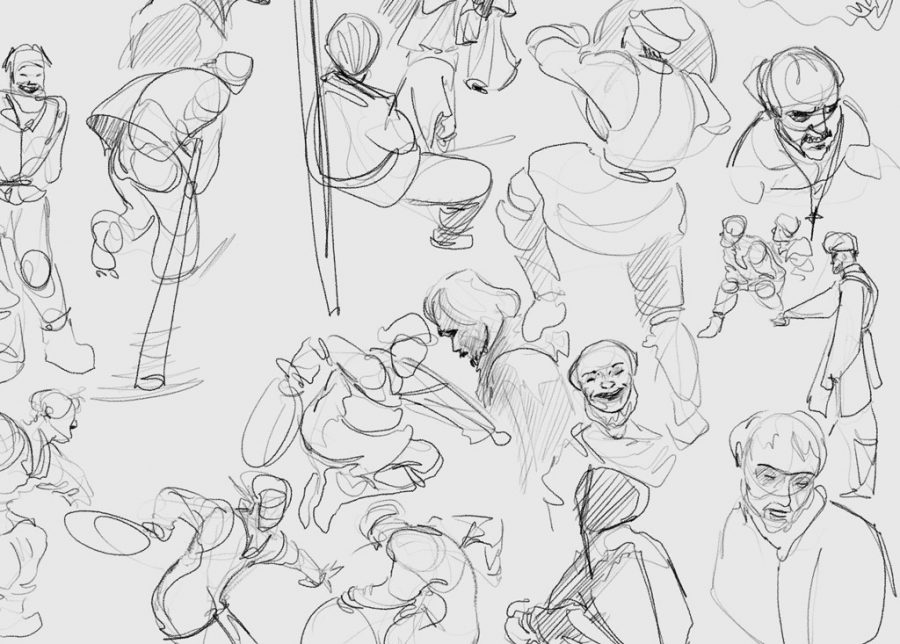
Similar to sports, there are NO professional athletes who do not train on a regular basis. To be an athlete requires exercising and training consistently in the same way that being an artists requires consistency. Expectations on how much you should improve in your drawing skills should be reasonable in the same way that one’s first week of weight-lifting shouldn’t be expecting to set a world-record results. It honestly helped me to be more comfortable in my drawing when I realized how much improvement is tied to routine and consistency. Of course, there will be weeks where your gesture drawings look really bad and you might panic, but you just have to refocus on what the issue is and then continue to confront it. Not drawing is the fastest way to not be good at drawing, which seems obvious, but it is quite tempting when drawings aren’t turning out the way you want them to be. Now, that doesn’t mean you should just fall into a brain-dead routine, as drawing does require learning new things, but consistency is by far the most important aspect.
I’ll quote a teacher I had who said something I found to be very controversial at the time but since I still wrestle with the quote to this day I think that means it had an element of truth that I refuse to acknowledge:
“You are only going to get good in the areas you practice in. Drawing anatomy drawings for several years will not make you better at character acting. Drawing character acting sketches for several years will not make you better at anatomy. Drawing hands all day will not make you better at drawing faces. Focus on what is most important for your trade.”

Now, for storyboarding, I’ve actually developed a good number of fun exercises that I use very frequently when trying to develop a scene or come up with a good idea. One of the ones I use commonly is a “timed interval drawing” technique which is essentially the same thing as gesture drawing but instead of having a model the goal is to draw one storyboard panel for every time interval. For me, I’ve found that the faster the intervals are the better the results, so usually I will keep the timer around 45 seconds in length. I think the reason behind this is because the faster I thumbnail a panel the closer I am to watching a movie in real-time, instead of spending two minutes on a thumbnail which will inevitably lose a lot of energy and sense of pacing. I use this technique professionally, but also for fun when I want to make something up on the spot and just see where a scene can go. By the end of a 45 minute session, I hope to have anywhere from 45-60 finished panels thumbnailed, which is more than enough to get a scene across to someone else (as long as they can understand very loose drawings haha).
This same method can also be used for figuring out cinematography or master shots where I’ll try and think of 45 different ways to convey a scene and then pitch different ideas to the director to see what kind of cinematography or tone fits what they are looking for. Usually, the second half of the session will result in much more creative and unique images than the first half, which tend to be pretty straight forward or generic.
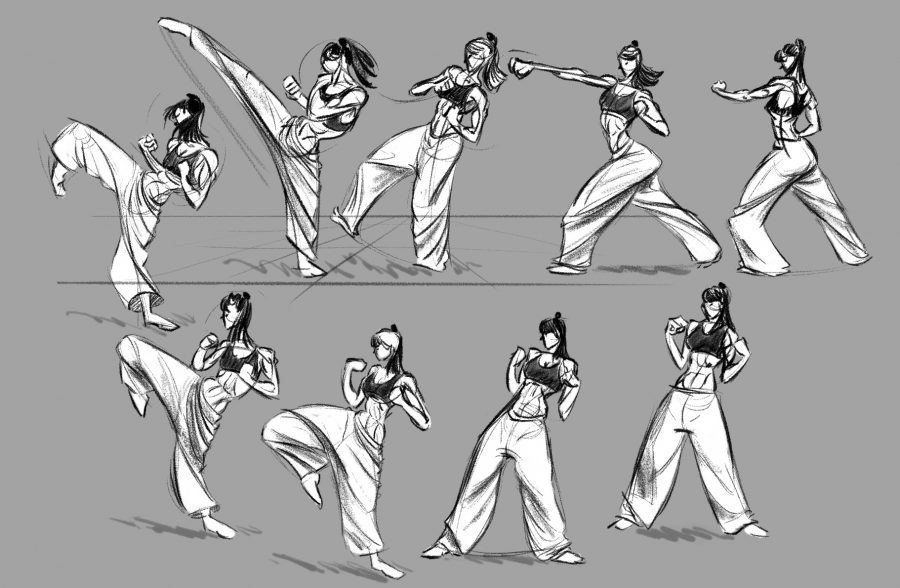
Q: You’ve done a lot of drawing over the last couple of years from BodiesinMotion.photo, what do you find most useful about the site?
What I like the most about the site is that you can see how an action starts from beginning to end. A lot of other gesture drawing websites only have the “keyposes” while BodiesinMotion has… well… the body in motion (haha). For animators it is very useful to be able to see the anticipation poses as well as the key-poses to understand how the body’s weight shifts around to make dramatic movements and even though I don’t animate as my main career choice, though the knowledge from the additional poses still comes in handy. I also commend the fact that the images are incredibly high resolution which means that images of a gymnastic routine can also be equally used as reference for drawing hands or faces if you zoom in far enough.
I think what surprised me the most was the Muybridge collection and how useful it is for character acting. In the first year of having a BodiesinMotion subscription, I don’t think I ever looked in depth into the Muybridge collection and it wasn’t until a few months ago that I started to realize that it had an enormous wealth of highly specific character acting based on whatever given tasks were involved. Something as simple as a character “Carrying a pot up a ladder” is just as important as knowing what someone looks like when doing a backflip. As of late, I find myself spending more and more time in Muybridge collection and I’m grateful for its presence on the site.
Where can people learn more about your work and how can they get in touch with you if they need you for character design or storyboarding work?
Here is a Linktree to several of my online portfolio accounts:
Also feel free to message me on my Instagram account: @chrispy_storyart
Thanks Chris, keep up the great work and keep inspiring artists everywhere.

